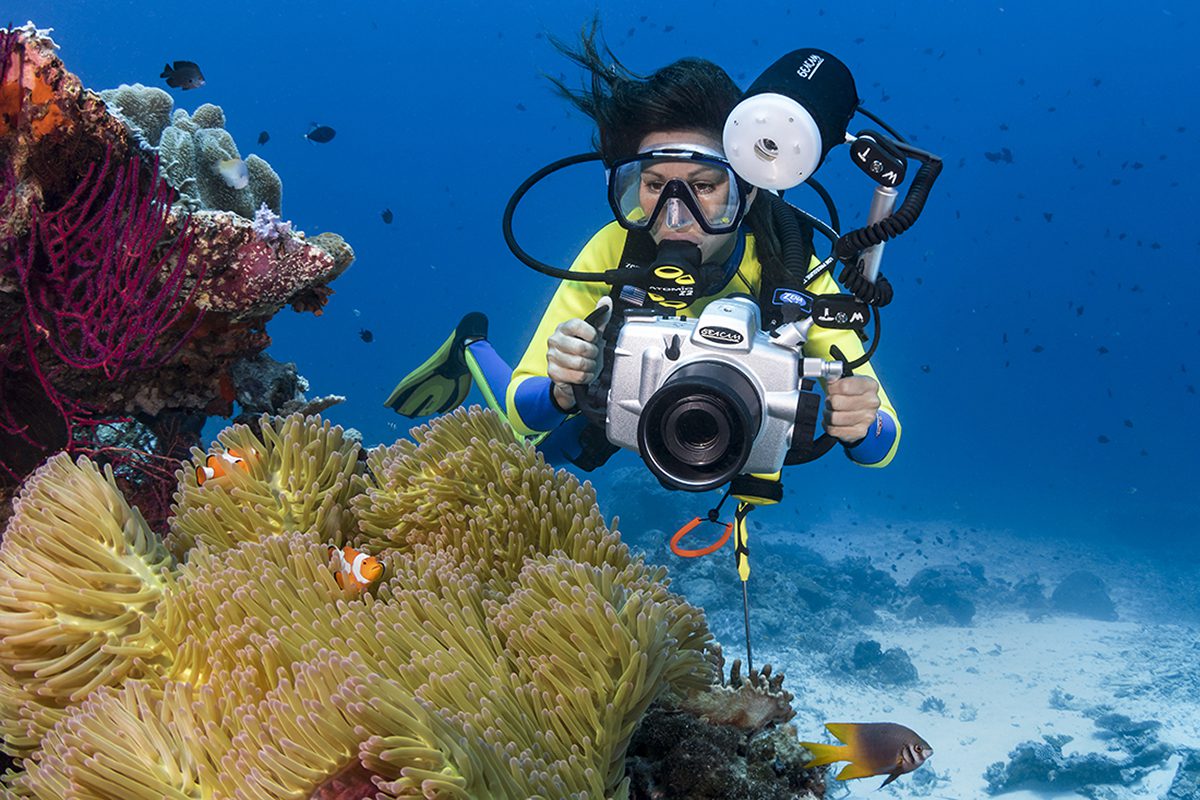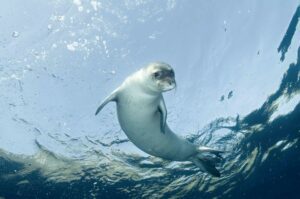Wakatobi Dive Site #35
Dunia Baru is rarely listed on a “Top Ten” roster of Wakatobi dive sites, largely because many believe the better sites are farther from the resort. However, this site’s close proximity to resort features a similar topography as The Zoo, with a hard coral-covered sloping profile leading to a sandy platform before rolling off again at 20 meters (70 ft) down a wall. Dunia Baru has an “ahh vibe” where divers can enjoy long multi-level profiles at middle depths while seeking out a diverse and intriguing collection of marine life.
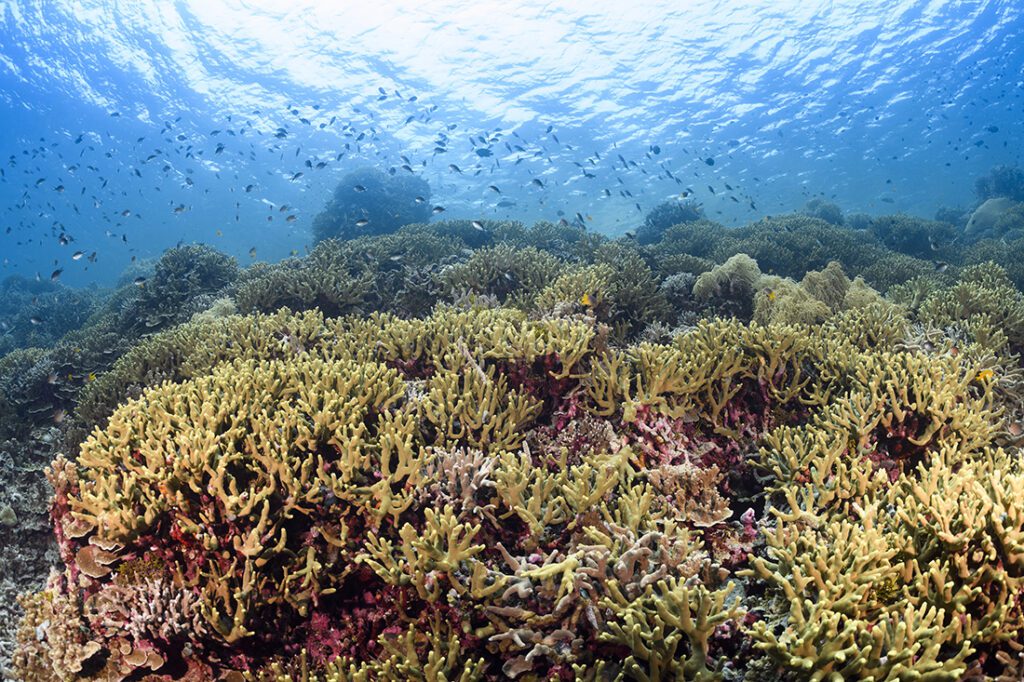
Dives begin with a descent of the mooring to a depth of 12 meters (40 ft), where a sand bottom is punctuated by mid-relief coral heads. The slope above the mooring transitions to coral-covered rocks and the upper reaches are dominated by a staghorn and finger coral forest that rises to snorkeling depths. Most divers save the top of the slope for end-of-dive off-gassing, but photographers sometimes make a beeline for the staghorns to search out the numerous species of cardinalfish that lurk among the branches, including the most sought-after, the pajama cardinalfish.
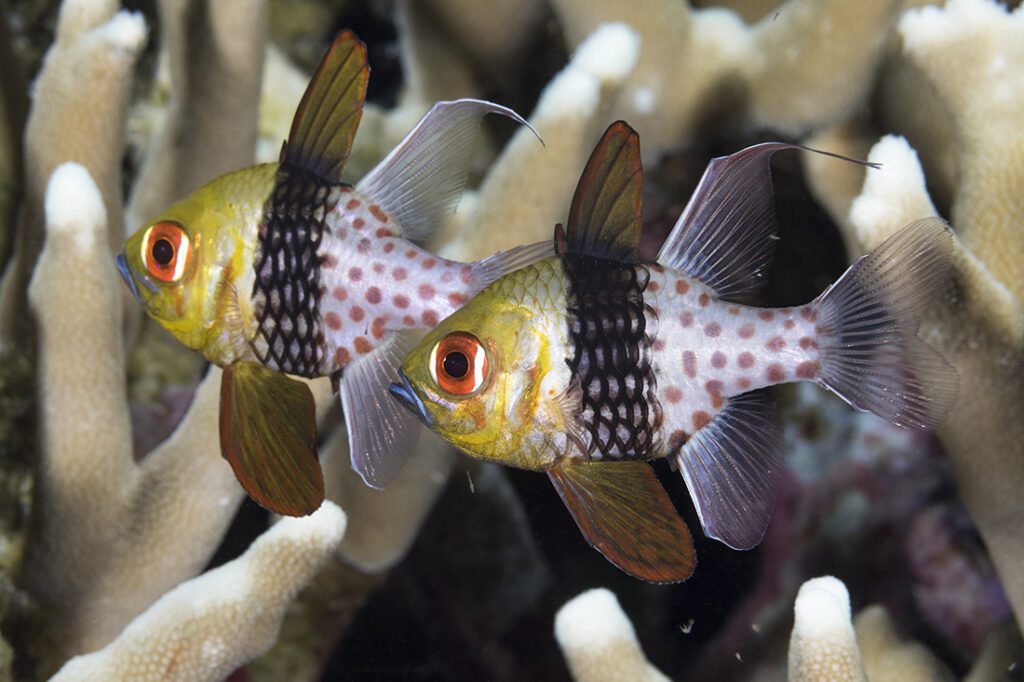
The pajama cardinalfish is a photographer's favorite as they sport one of the brightest and most unusual color patterns of any fish on the reef. The fish's striking red-orange eyes stand out from a greenish-yellow face that transitions abruptly at mid-body to a silvery hind section festooned with deep crimson spots. This unusual color pattern creates the appearance of a bleary-eyed sleeper wearing polka-dotted pajama bottoms — which is an appropriate analogy given that these fish are nocturnal foragers.
Divers who follow the slope downward from the mooring will find a wealth of additional subjects worthy of attention. Sand patches are dotted with the burrows of shrimp gobies with their cohabiting crustacean partner. It's good entertainment to watch these busy little shrimp as they go about the business of excavating the shared burrow.
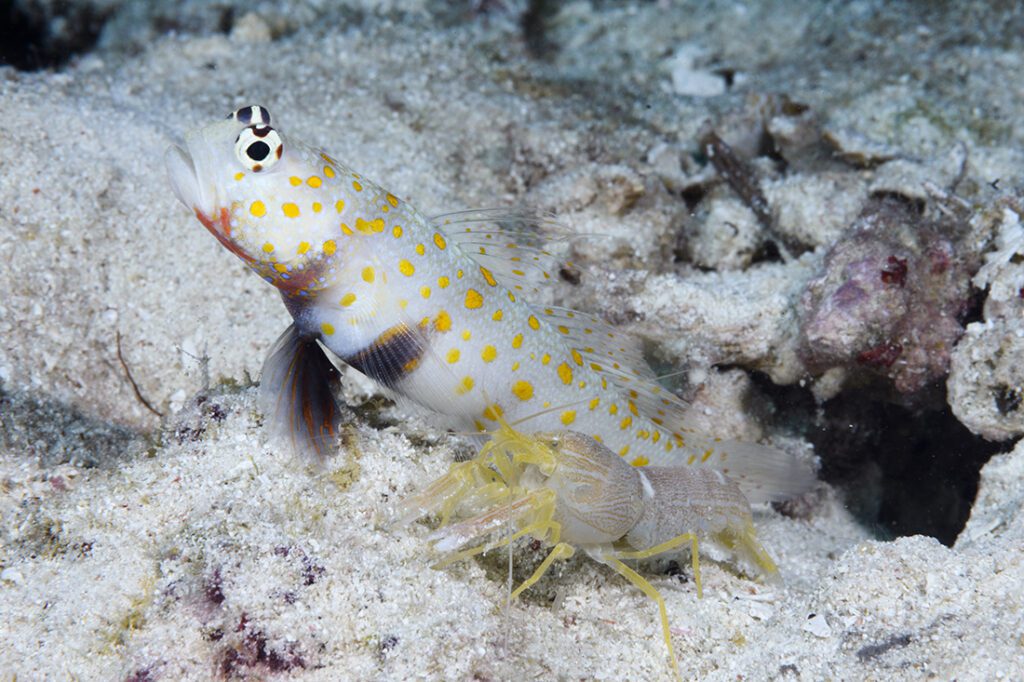
A detour to the rubble piles found on the northern edge of the site at depths down to 20 meters provides an opportunity to hunt for flasher wrasse. Often considered one of the “holy grails” of macro photography, these brilliantly-festooned fish can present quite a challenge for underwater shutterbugs, as they rarely hold still long enough for a portrait.
Bump-head wrasses and parrotfish regularly swing by as does the occasional hawksbill or green turtle. Dunia Baru also has its share of colorful nudibranchs and is one of the better locations in the Wakatobi Marine Preserve to seek out rainbow-hued flatworms.
Also on this site are the mantis shrimp which build elaborate underground chambers in the sand. Though sometimes making an appearance during daylight hours, these other-worldly critters are more often seen during night dives. And Dunia Baru is a popular location for after-dark diving, as it is located just a short boat ride from the resort, and experiences minimal currents. After the sun sets, a whole new cast of characters emerges to delight divers at what many who have visited this site describe as one of their new favorites.
Click here for more information on Wakatobi Dive Resort
Photo credits: Walt Stearns
